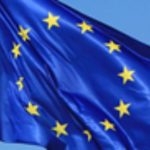Brazil: Analysis of international patents and the global economy
- 04 October 2016
The number of patent applications applied for by each country is a good indication of the level of innovation of the movement of the economy. The investment in Research and Development of companies of all sizes and universities proves the degree of productivity of a nation. Hence, a good indication of comparison among countries is the number of filings of patent applications via PCT Treaty (Patent Cooperation Treaty), which is a special relevant index, when comparing developing and emerging countries.
PCT is an International Treaty with 145 Contracting States, enabling the protection of the same invention in several countries upon filing a sole application. The initial filing is made at the World Organization of the Intellectual Property or at Regional Agency with the same function of International Authority. Its main advantage for he who needs an international protection to its invention is the reduced initial cost. Inasmuch as the patent application is valid, prima facie, to all the countries signatory to the Treaty, the rate paid for the filing of the international application is the sole initial investment. However, later, it is necessary to file the PCT International Application in the so called national phases of the countries, members of the Treaty, where it is of interest to protect the invention. At this stage, the rates must also be paid, involving the submittal of the filing and prosecution of each application in each country respectively, under local registration.
Taking into consideration the economic impact of the innovation and the number of patents filed under the PCT Treaty, it is possible to make some interesting analyses of each country and its participation in the global economy. The data of the number of PCT Applications each Country applied for can be easily gathered from an initial consultation on the World Organization of the Indu-strial Property´s site.
The greatest Economy in the World
The researchers and North American Companies filed 13,036 patent applications overseas over the first quarter of 2016. Over the whole semester, the applications filed amounted to 17,799, including the applications applied for internationally under the PCT. The United Sates with a Gross Domestic Product (GDP) of US$ 17,94 trillion holds a number of patent applications applied for with the World Intellectual Property Organization much higher than the country having the first GDP in the world, China.
The Asiatic Country, of which the GDP reached – in 2015 – an amount above Us$19,3 trillion (almost two trillion above the one of the United States), filed 10,387 patent applications through the first half-year of 2016. The variation between the first and the second half-year is considerable: from January through March 7,865 applications were filed. On the other hand from April through June, the filings reached 2,522. Curiously, over the first three months of 2016, the growth rate of the country was the lowest since 2009, with an increase of 6,7%.
The difference between the Chinese Gross Domestic Product and the total patents filed by the country reflects an industrial transition in its economy. For many years now, the indices of growth have been supported by the industries performing its business in Special Economic Zones, the majority of them manufacturing products by transfer of technology from North American, European and Chinese Companies. Little by little, there occurs a change of this industrialization mode, with investment in Research & Development and, therefore, the increase of the number of patents internationally filed. An instance of such a transformation can be found in the Company Foxconn, which is the greatest outsourced producer of information science components, having, nowadays , over forty two thousand applications filed via PCT Treaty.
Brazil and the Emerging Countries
In compensation, Brazil is moving much behind the two greatest economy in the world. With only just 161 patent applications applied for via PCT Treaty over the first half-year of 2016 – with 120 over the first quarter and 41 in the second – the number of filings does not amount to even 10% out of the China number. In comparison, the Brazilian GDP has fallen for more than five quarters, a retroaction of 3,8% from 2015 and 2014.
The numbers of economy of the countries show interesting differences in the numbers of PCT applications in proportion to their GDP, when making an analysis, taking into consideration the emerging countries. Brazil, even with a recession of over one year, ranks seven in the world economy. Its position on the market of the Intellectual Property, however, is not so much behind India, ranking third in the GDP with 7,9 trillion, which, in the same half-year of 2016, filed 480 applications. On the other hand, Russia, with the sixth greatest GDP in the world (US$3.7 trillion) filed only just more than Brazil.
Particularly, respecting India, it is interesting to raise some comments. Regarded as a technological granary, it is surprising to note the low number of PCT applications in comparison with the GDO. The greatest software programs in the world, we cannot but query whether the Indian Researchers lack the culture of the international patent for its computer programs. The International Patent Treaty of the World Intellectual Property Organization shows in its text predictions permitting its software program patents to be incorporated in its ambit.
On the other hand, in respect of the Brazilian participation in the International System of the Intellectual Property, it is well to say that it is an alternative for those companies aiming at the internationalization in mid-term. Even though the mindset is not so common among our companies, it begins to be more usual among startups, which perceive that its technology can be applied to any country. Furthermore, the PCT many a time is an alternative for the opinions from the BPTO (Brazilian Patent and Trademark Office), which, usually, take some years.
This statistics shows that the United States is still the country which most endeavors to register international patents, whereas the Emerging States must yet strive to implement the innovation of their territories, both in the companies and inside the universities. Brazil, even moving behind the United States and China, is close to Russia, which neglected its innovating attractive, in view of geopolitical reasons – ever since the end of the Soviet Union. India, in turn, seems not to work the whole potential of its innovating researchers – especially in the information technology area, in which the country enjoys a good reputation.









